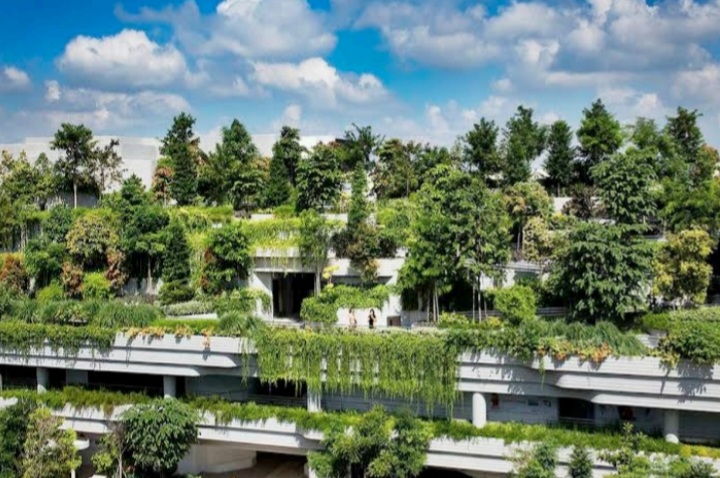How Nigerian Campuses are Creating Green Havens for Students

Nigeria is a country with a rich biodiversity, but also a high rate of environmental degradation. The effects of climate change, deforestation, pollution and waste management are felt by millions of Nigerians, especially the youth who are the future leaders of the nation.
However, some Nigerian campuses are taking steps to create green havens for their students, where they can learn, live and thrive in harmony with nature.
These are some of the examples of how Nigerian campuses are creating green habitats for students:
The University of Lagos (UNILAG) has established a Botanical Garden, which covers an area of 11.34 hectares and hosts over 300 plant species, some of which are endangered or endemic to Nigeria.
The garden serves as a living laboratory for teaching and research, as well as a recreational and educational facility for students and visitors. The garden also provides ecosystem services, such as carbon sequestration, air purification, water conservation and soil erosion control.
The Ahmadu Bello University (ABU) has developed a Green Campus Initiative (GCI), which aims to promote environmental sustainability and social responsibility among its students and staff.
The GCI involves various activities, such as tree planting, waste recycling, energy conservation, environmental education and advocacy.
The GCI also organizes an annual Green Festival, which showcases the achievements and innovations of the campus community in environmental sustainability.
The Federal University of Technology, Minna (FUTMINNA) has implemented a Green Campus Project (GCP), which seeks to transform the campus into a model of environmental excellence and best practices.
The GCP includes several components, such as green buildings, green transportation, green energy, green landscaping, green waste management and green awareness.
The GCP also collaborates with other stakeholders, such as the Niger State Government, the National Environmental Standards and Regulations Enforcement Agency (NESREA) and the Green Habitat Initiative (GHI), to enhance its impact and outreach.
The Obafemi Awolowo University (OAU) has maintained a Natural History Museum, which houses over 100,000 specimens of plants, animals, fossils and minerals from Nigeria and other parts of Africa.
The museum serves as a repository of the nation’s natural heritage, as well as a resource center for teaching and research. The museum also offers guided tours, exhibitions, workshops and seminars for students and visitors.
The museum is located in a serene and scenic environment, surrounded by lush vegetation and wildlife.
These are just some of the examples of how Nigerian campuses are creating green havens for students. By creating green habitats for students, these institutions are not only improving their own quality of life, but also inspiring others to follow suit.
They are showing that it is possible to achieve academic excellence and innovation without compromising the environment. They are creating green havens for themselves and for generations to come.
Green habitats offer a multitude of benefits for students. Firstly, they enhance teamwork, problem-solving abilities, communication skills, and self-esteem by fostering cooperation and collaboration with both peers and the natural world.
Additionally, these habitats promote physical and mental well-being, providing students with increased access to fresh air, sunlight, green spaces, and opportunities for exercise.
Furthermore, they instill a lifelong love for trees and nature, cultivating an appreciation for the environment and its rich biodiversity. Beyond these personal advantages, green habitats also yield broader societal benefits.
They contribute to energy conservation, reduce the risk of floods, create urban wildlife habitats, combat air pollution, and even support sustainable food production, as students actively engage in practices of sustainability and environmental conservation.
